Loch Ness Hero Robert Rines Dies
Posted by: Loren Coleman on November 3rd, 2009
Robert H. Rines with a remote vehicle that took photographs in Scotland’s Loch Ness. 2008 photo/Elijah T. Ercolino.
Robert H. Rines, 87, was well-known as a tireless seeker of the cryptids termed the Loch Ness Monsters and Nessies. I am upset to report that he died this past Sunday, at his Boston home, surrounded by his family, of a heart attack.
Down through the years, via correspondence, emails, and in person, Robert Rines’ and my life crossed. The time that will always stand out in my memory will be when we talked as we were both on separate expeditionary explorations at Loch Ness in July 1999. I introduced him to my sons Malcolm and Caleb, and he did the same regarding his son Justice. To me it always demonstrated a like-minded respect we had for cryptozoology’s impact on future generations, and how we liked to involve our boys in the quest.
I am deeply saddened to hear of the passing of a true friend of cryptozoology, Dr. Rines, on November 1, 2009, on the cryptozoology museum’s low-key opening day; how fitting it seems. I was looking forward to Robert’s future visit. It will not come to pass.
Rines was many things. Father, husband, lawyer, inventor, seeker, college founder, music lover, and more. He also was a 37 year veteran of hunts for the Loch Ness Monsters, needless to say.
The New Englander had over 80 patents, including those for clarification devices that intensified the resolution of radar and sonar scanning. Some of what he invented formed the underlying technology used to guide Patriot missiles during the 1991 Gulf War and produced early warning missile-detection systems. Other inventions of his were later incorporated in ultrasound imaging of internal organs. He donated the radar patent to the U.S. government and gave the imaging patent to the people of the world to use for free.
The Franklin Pierce Law Center in New Hampshire was founded by Rines, and he assisted moving patent and intellectual property law into the legal spotlight. He taught at Harvard and MIT, holding degrees in law, physics and microwave technology. Rines’ inventive diversity included composing music for 10 Broadway and off-Broadway productions.
In 1963, Rines founded the Academy of Applied Science, now based in Concord, New Hampshire, to promote innovation and encourage youths to delve into the sciences.
Robert Rines became interested in the search for the Loch Ness Monsters after attending a talk in 1969 by Roy Mackal. Rines offered help, through the AAS. Rines first investigated at Loch Ness in 1970, using sexual attractors for bait. Rejecting those in the years afterward, he returned in 1971 with refined sonar equipment.
Through the Academy of Applied Science, he would fund expeditions in search of the Loch Ness cryptids by Roy Mackal and others, and then, of Bigfoot around Mt. Hood, Oregon, for example, in 1991, when he gave a one million dollar grant for five years to Peter Byrne.
Rines was frustrated with the hunt for Bigfoot, and never saw the same kinds of results from that grant money he got from his quest for Nessies. He did write a fine foreword to Byrne’s book, The Search for Bigfoot: Monster, Myth or Man (Acropolis Books, 1975) and one in Tim Dinsdale’s Monster Hunt (Acropolis Books, 1972). Rines is credited as a coauthor of Search for the Loch Ness Monster (MIT, 1976), Justice & MacNessie: A First Adventure With The Loch Ness Monster (AAS, 1980), as well as journal articles on the Loch Ness evidence he recovered.

This 2006 file photograph provided by Joanne Hayes-Rines.
Rines saw a cryptid in Loch Ness near the beginning of his days of interest in the creatures. On June 23, 1971, Robert H. Rines and his wife Carol watched a 20-foot-long hump moving in Urquhart Bay.
“It looked like the back of an elephant,” Rines noted to the Boston Globe in 1997, reliving the experience when he looked out the window of a friend’s house in Scotland during a tea party and watched the object disturb the loch’s surface. “I know there was a big unknown thing in that lake. That’s why I haven’t let go.”
“You don’t get into this passion of trying to find Nessie if you haven’t seen it, and he did see it with his late wife, Carol, and two friends,” his wife, Joanne Hayes-Rines said.
“There are few of us willing to risk our reputations on something as improbable as this, judged with such ridicule,” he told Boston Magazine in 1998. “Scientists think there are other things to do for fame and fortune than something this crazy. So we do it quietly as a private venture and don’t have to hear that we’re ‘crazy people chasing monsters and wasting public funds.’ ”
The encounter enticed Rines to go back to the Scottish lake every few years, hoping to use better imaging and tracking technology to capture sharper images of the animal.
Rines also took underwater photographs of what he felt were Nessies, in the 1970s.
On August 8, 1972, underwater footage was taken in Urquhart Bay near Temple Pier by the team headed by Robert H. Rines from the Academy of Applied Science of Belmont, Massachusetts. The film, taken from an underwater camera suspended from Rines’s boat Nan, corresponded to a Raytheon sonar tracking deployed on another boat, the Narwhal, of a large object that seemed to be chasing fishes. Two frames show a roughly triangular (rhomboid) flipper or fin against a rough body, while a third shows two blobs. The flipper images became clearly visible only after digital enhancement, resulting in criticisms that the photos were retouched.
A 1975 underwater photo by Rines appears to show the body, flipper, neck, and head of a large animal in Loch Ness.
On June 20, 1975, Robert Rines obtained two more subsurface photographs southeast of Temple Pier, one showing a “gargoyle” head with apparent horns, and the other the head, neck, and body of a allegedly plesiosaur-like animal. Many experts dispute that the photos show Nessie. G. E. Harwood concluded in 1977 that both images show debris and silt on the loch bottom. Adrian Shine thought the full-body shot might actually show shifting silt patterns, and the gargoyle head could be a tree stump that scuba diver Dick Raynor photographed and dredged up in October 1987 during Operation Deepscan.
Rines, for his part, never engaged in what he saw as the petty personality-driven feuding and nitpicking among true believers and debunkers. He rarely spoke publicly about such things, instead continuing his searching at the loch for more concrete evidence. Sometimes this had surprising results.
For example, on June 30 and July 1, 1976, Robert Rines, Marty Klein, and Charles Wyckoff of Klein Associates recorded large moving objects on an EG&G Mark 1B side-scan sonar mounted at Temple Pier, on the shores of Loch Ness. Rines and Wyckoff returned to the loch in the summer of 1997 for a scientific documentary sponsored by the American Nova television series. Although the producers had intended to debunk Nessie, the two large sonar contacts obtained during the expedition convinced them otherwise. It was a remarkable turn of events.
The formal Latin name Nessiteras rhombopteryx was given by Sir Peter Scott and Dr. Robert Rines in 1975 and based on the underwater photographs of 1972 and 1975. The name means “the Ness wonder with the diamond-shaped fin.” Their paper was published in Nature , 258 (1975): 466–468.
Rines frequently was quoted as saying he thought the Loch Ness cryptids looked like plesiosaurs, marine reptiles that lived underwater millions of years ago.
“It was maybe 45 feet (14 metres) in length with a neck 4 or 5 feet (1.2 or 1.5 metres) long, according to eyewitness accounts,” he once said.
In recent years, specifically in 2008, Rines theorized that the Loch Ness Monsters may have become extinct, citing the lack of significant sonar readings and a decline in eyewitness accounts. Rines undertook one last expedition to look for remains of the monster, using sonar and underwater camera in an attempt to find a carcass, in conjunction with the History cable network’s series, MonsterQuest.
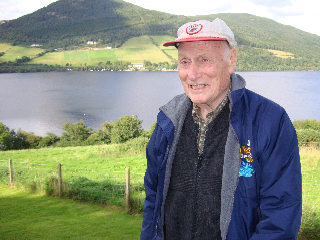
Robert Rines is shown as he appeared on MonsterQuest, earlier in 2009.
Rines did not stop his Nessie pursuits entirely, even after a stroke two years ago forced his body, and unfortunately his mind, to slow down considerably.
Rines (1923-2009) was born in Boston and raised in Brookline, Massachusetts, the younger of two children born to two lawyers. He began playing violin at 4 and many thought that would be his career path.
The remembrances of Rines flow easily. Bryan Marquard of the Boston Globe writes:
“Then there’s the anecdote about an encounter with a man who heard Dr. Rines, then about 11, playing violin at a camp in Maine. Impressed, he asked to borrow a violin and played a duet with the young musician. ‘That gentleman turned out to be Albert Einstein,’ said his wife, Joanne Hayes-Rines. ‘People just don’t have stories like that in their lives.'”
Rines never did take the musical path for long, although during his college days he did compose a bit. From the Massachusetts Institute of Technology in 1942, he graduated with a bachelor’s in physics, and then joined the Army Signal Corps as a radar operator during WWII.
While serving, he developed the modulation technique used in the military’s Microwave Early Warning System. After the war, he worked in the federal patent office while getting a law degree at Georgetown University in Washington, D.C., from which he graduated in 1947. In 1972, he completed a doctorate in microwave technology at Chiao Tung University in Taiwan.
Rines was married to Carol Williamson, who died in 1993. A couple of years later, he married Joanne Hayes-Rines.
Bryan Marquard wrote: “‘People who would read about him would expect to meet someone who had a great aura about him and maybe was standoffish, unapproachable,’ his wife said. ‘He was so far from that. He was one of the most loving and approachable and funny people — and humble. I think when people are really brilliant, they are humbled by the things they don’t know. Even though his accomplishments were amazing, he was still searching.'”
“He was still working,” his wife said on Monday. “He had a meeting with clients the week before he died.”
In addition to his wife, Robert Rines leaves two sons, Justice of New York City and Robert of Concord, N.H.; a daughter, Suzi Rines Toth of Duxbury; a stepdaughter, Laura Hayes-Heuer of Washington, D.C.; and four grandchildren.
A memorial service is set for Saturday. Further details, at this time, are unknown.
Sources consulted: Bryan Marquard, Boston Globe; Rodrique Ngowi, Associated Press; The Daily Mail; Mysterious America, George Eberhart’s Mysterious Creatures, The Field Guide to Lake Monsters…, Rines’ works, and personal memories.
661 Congress Street, Portland, Maine 04101 / Grand Opening Friday November 6, 2009
Our condolences to the family and friends of Robert Rines.
For more museum information, see here, and here.
About Loren Coleman
Loren Coleman is one of the world’s leading cryptozoologists, some say “the” leading living cryptozoologist. Certainly, he is acknowledged as the current living American researcher and writer who has most popularized cryptozoology in the late 20th and early 21st centuries.
Starting his fieldwork and investigations in 1960, after traveling and trekking extensively in pursuit of cryptozoological mysteries, Coleman began writing to share his experiences in 1969. An honorary member of Ivan T. Sanderson’s Society for the Investigation of the Unexplained in the 1970s, Coleman has been bestowed with similar honorary memberships of the North Idaho College Cryptozoology Club in 1983, and in subsequent years, that of the British Columbia Scientific Cryptozoology Club, CryptoSafari International, and other international organizations. He was also a Life Member and Benefactor of the International Society of Cryptozoology (now-defunct).
Loren Coleman’s daily blog, as a member of the Cryptomundo Team, served as an ongoing avenue of communication for the ever-growing body of cryptozoo news from 2005 through 2013. He returned as an infrequent contributor beginning Halloween week of 2015.
Coleman is the founder in 2003, and current director of the International Cryptozoology Museum in Portland, Maine.

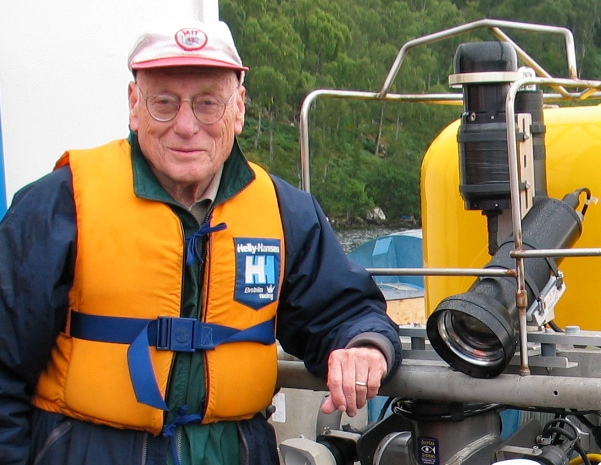
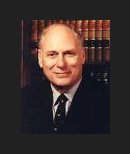
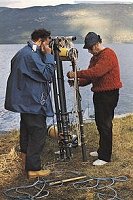
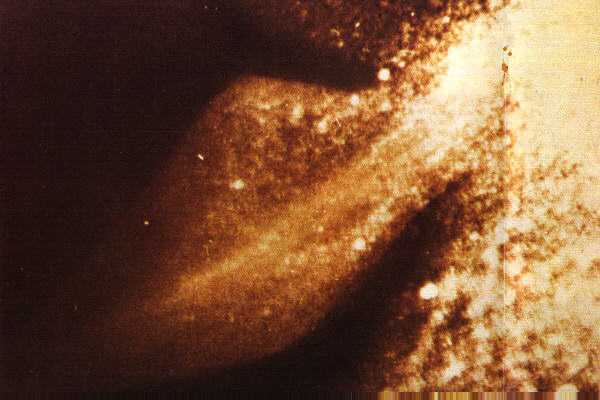

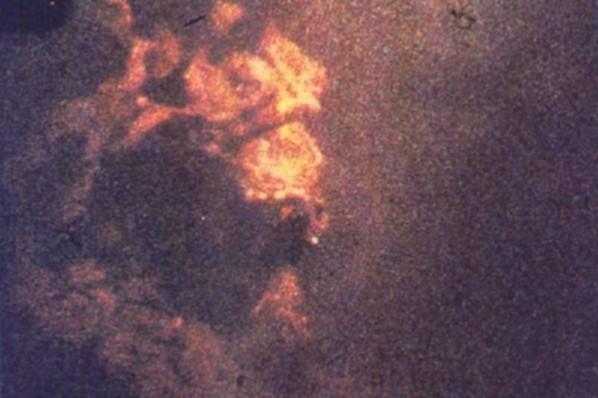
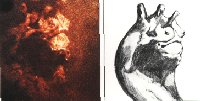
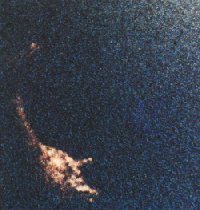
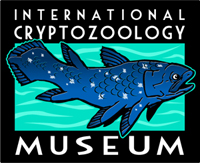









The world will miss Robert Rines. He put his money where his heart was and tried to use the tools and rigor of science to demonstrate the truth behind sightings and legends. He ignored ridicule and followed the evidence where he saw it. If he sometimes made mistakes, or fell short of what he sought, that is no indictment of him. It only illustrates the challenging nature of the quest.
Godspeed, Robert.
Sleep well and peacefully, you’ve earned your rest old friend.
A true Renaissance man, it seems that the only success that escaped his incredibly productive life, was the final proof of the existence of Nessie. Well, he had to leave something undone for the future generations…
Rest in Peace.
PS: And I absolutely love that comment made by his widow concerning his humility. Something you do not see much of from the professional skeptics, do you?
A good long life, well spent. A seemingly good man with integrity. The only sad thing is that he died without a solution to the puzzle that fascinated him.
What an amazing life story, full of accomplishment and wonder. May he rest in peace.
This death affects me particularly because I’m “into” people like Rines—Renaissance men who can effortlessly “mutitask” various disciplines without breaking a sweat. People like that are few and far between. My favorite ones of that ilk are people, not surprisingly, from the Renaissance—Da Vinci, Paracelsus, Francis Bacon, etc… Rines must CERTAINLY be among their illustrious company in the Great Beyond.
I saw him last in the MQ episode about whether Nessie was dead or not and he did look frail and sickly. I had a feeling (and I’m sure I’m not the only one who felt that) that Rines sort of knew the “end was near” and was using the episode as a sort of “farewell,” as well as a last chance effort to prove whether Nessie was alive or not. I was privileged to watch him in action in that episode.
RIP—Robert Rines.
“Say not the struggle naught availeth…” 🙂
A sad day indeed.
I’ve seen Mr. Rines many times over the years on various Nessie programs. He always seemed quite the intelligent gentleman. But I had no idea he invented ultrasound imaging! And then donated it to the world. How generous!
One of the more reasoned, methodical and un-excitable figures in the long Loch Ness saga, and will surely be missed. Of the famous pictures, I’ve never thought the gargoyle head was convincing, and I think it’s pretty well accepted now that it represents bottom debris, photographed while the camera was
dragging on the bottom and photographed from the side, and not vertically, though of course the snap came out as if it was vertical But the flipper shots, including the fuzzy ‘2 animal’ shot, which were simultaneous with the sonar scans, and also the full head/neck/body shot constitute the real deal(s) and represent the best evidence, along with the Gray photo and the Dinsdale film, despite all attempts to explain them away, or simply storm the literature with with mis-information.
Anyway, 3 cheers to Robert R – a visionary, an adventurer and a lifelong learner. How rich his life was!
It is sad to hear of his passing on. I say thanks for inspiring others, and being such a role model.
the man used his life to discover an endangered miracle of nature.
good life.
his pictures are what really convinced me that it was even worth looking into lake monsters.
thanks…
What an interesting, accomplished life.
Although I didn’t know Dr. Rines personally, I feel like I have lost someone in my life.
Once I was enchanted by his “flipper” photo, and spent many pleasant hours questing in my mind and imagination for Nessie.
Thanks for the memory, Dr. Rines.
His research unbiased so it has holes in it has he the real proof that Nessie is real